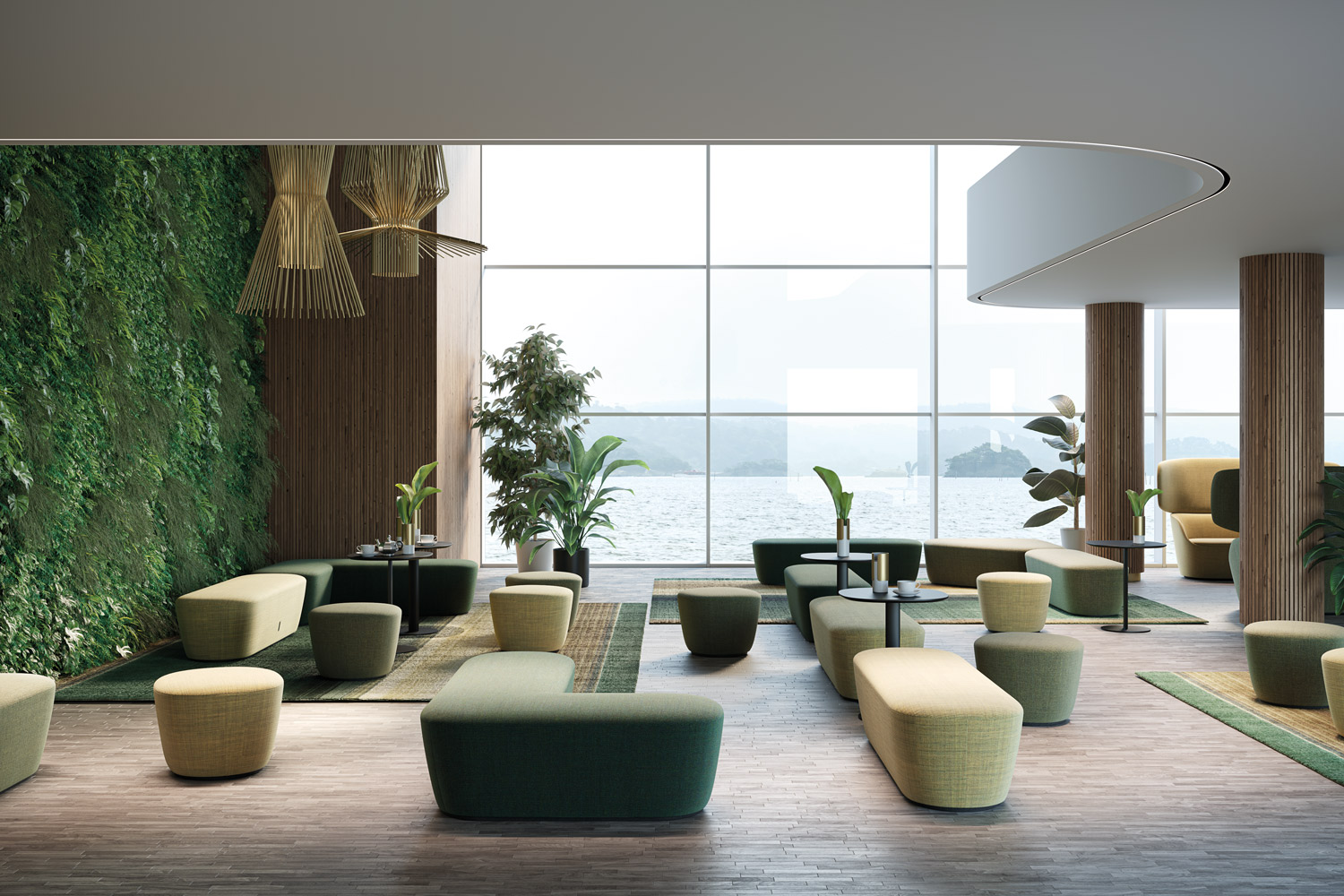In recent years, we have become accustomed to seeing photos on our social media of people working with their computer from the beach, from the mountains or from high-altitude chalets. Digital nomads are certainly not a novelty.
The Covid-19 emergency has put a stop to business travel, but it definately hasn’t eliminated this category of workers. After a year of lockdowns, more and more people are working remotely (perhaps in a hybrid format) and don’t necessarily do it from home. While in the early days domestic dwellings were able to meet the needs of freelancers, comfort can now be found in other areas where sofas, huddle rooms, electrified desks and other services represent the new way of working.
Co-working environments have become a solution for many, even in luxurious ways like by renting rooms in hotels that offer workspitality services.
But the real revolution is taking place in the lobbies, receptions and entrance areas of hotels, companies and shopping centres.
Spaces that used to be waiting areas or passageways are now being given a new lease of life, becoming community hubs for digital nomads and others. The services are mainly used by remote workers from neighbouring districts, who are looking for a moment of socialisation and productivity similar to the ones of traditional offices. Workers are mentally more serene and at ease because the context is more relaxed.
Why adapt lobbies and receptions to co-working?
In the case of hotels and shopping centres, access is often granted with the aim of upselling other services, such as restaurants, bars and gyms, which also represents an additional incentive to increase turnover. Companies can also use coworking receptions as a branding tool, using art and walls to communicate their products, services and corporate philosophy.
How to design the lobby of the future
Here are some must-haves for designing the best lobbies and reception areas, with the aim of attracting digital nomads and more.
- Comfortable seating – This is the key feature, whether it’s sofas, armchairs or task chairs. They should be ergonomic in order to support your posture and allow you to work in a concentrated manner even with a laptop. It’s advisable to prefer warm colours to bright ones, recreating an almost domestic atmosphere, in line with the resimercial style.
- Electrification – Power sockets and USB or touchless charging points should be positioned in every corner of the room to allow easy access for every visitor.
- High connectivity – Connectivity, both WiFi and LAN, should be high speed and shouldn’t overload when used by too many guests.
- Tables and coffee tables – Work requires support. Choosing the right coffee table with care is a must when you’re trying to provide a comfortable experience to people.
- Coffee break areas – Vending machines placed in the corner of the corridor are outdated and are being replaced by work cafès with high tables and stools that encourage socialising. Hotels and shopping centres can also rely on bars, cafés and restaurants to provide an additional service.
- Private or semi-private areas – Pods, phone booths, armchairs with wide enveloping backrests, small meeting rooms and much more: when designing a lobby with workspitality in mind, private spaces must be considered.
Lounge furniture systems are great for designing a well-equipped reception area because they combine the reception’s aesthetic value with the comfort of ergonomic seating, while also meeting the various requirements for work, communication and representation areas. After all, once you’re comfortable, working becomes certainly easier!

